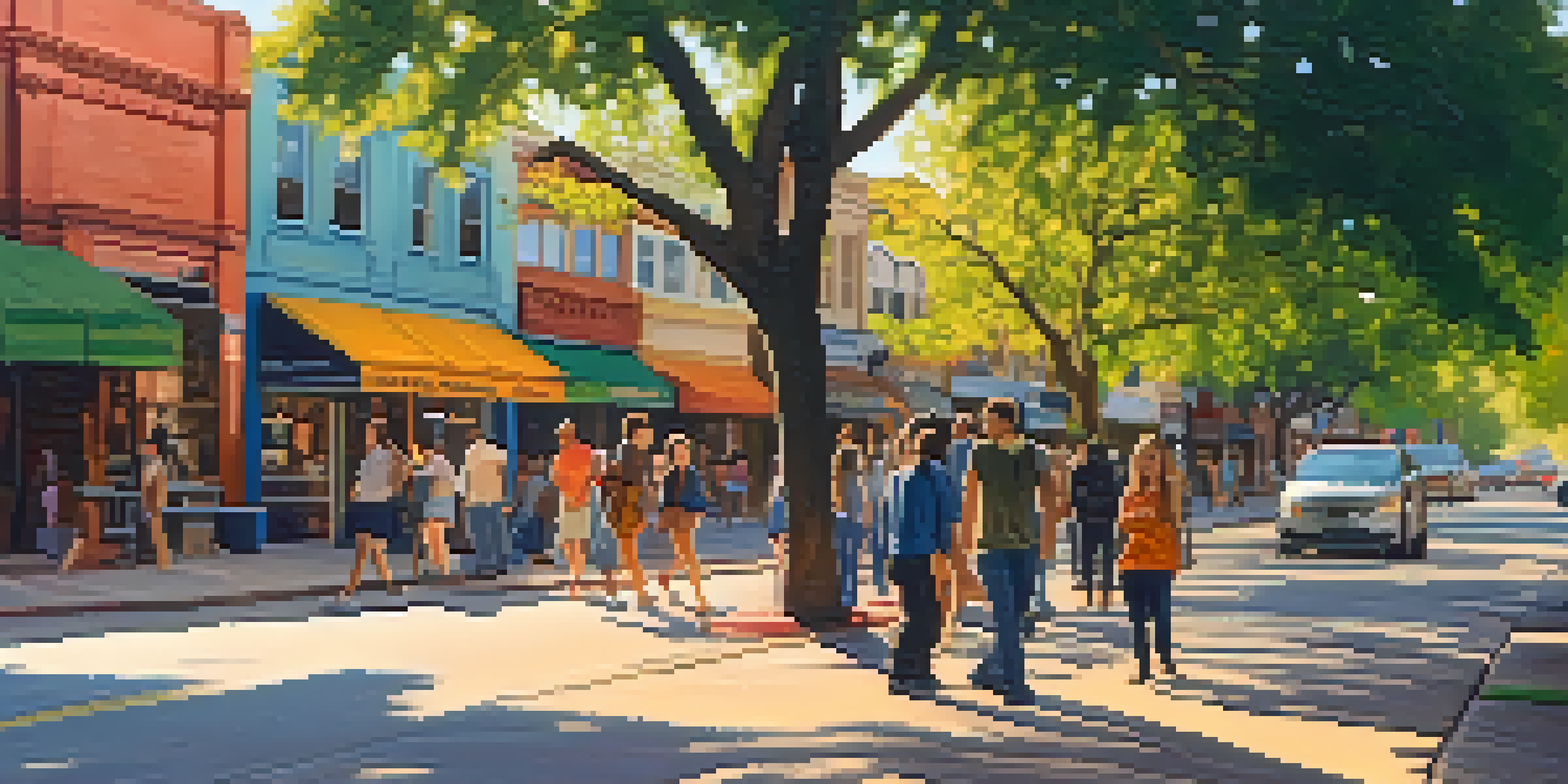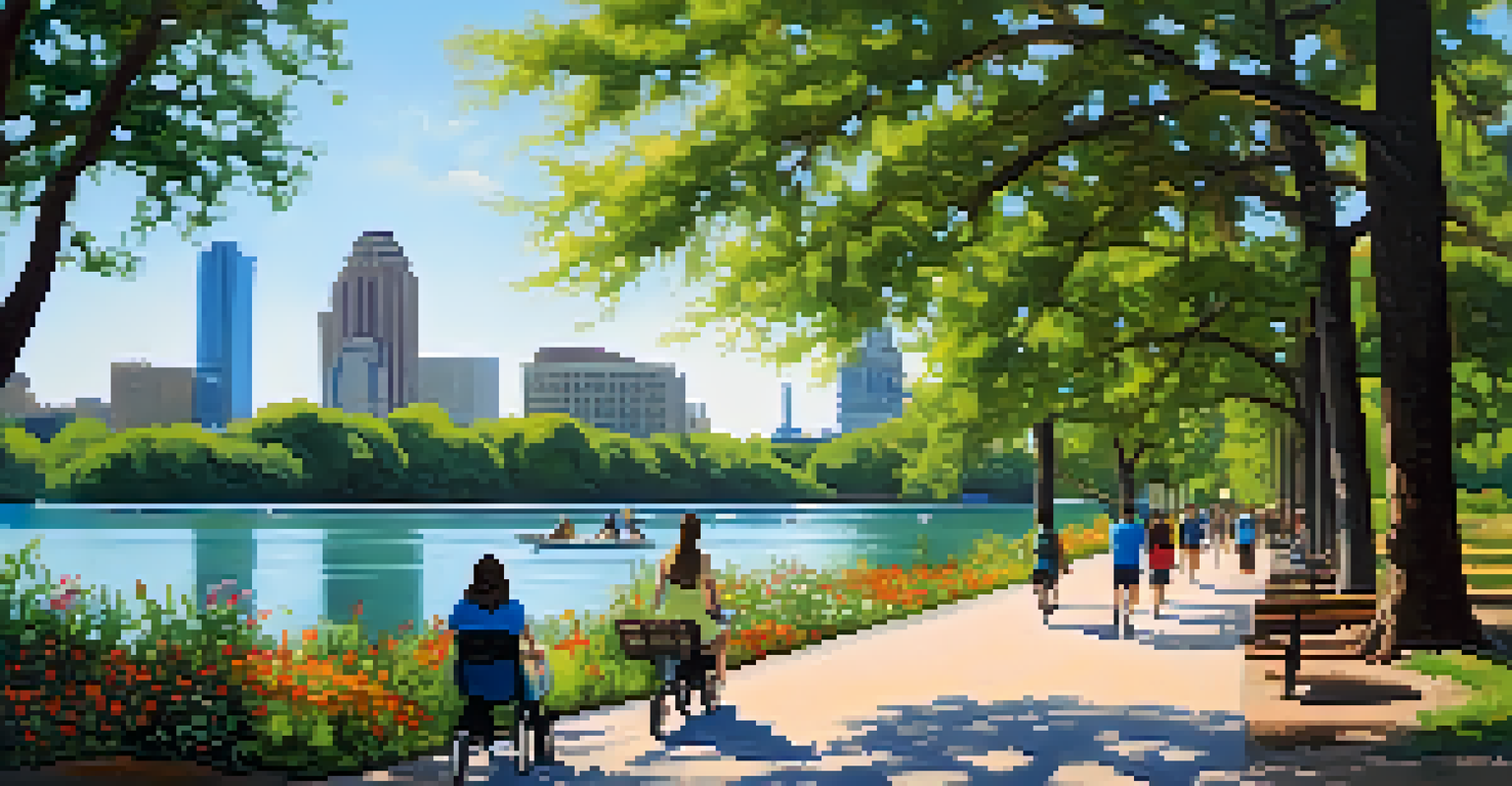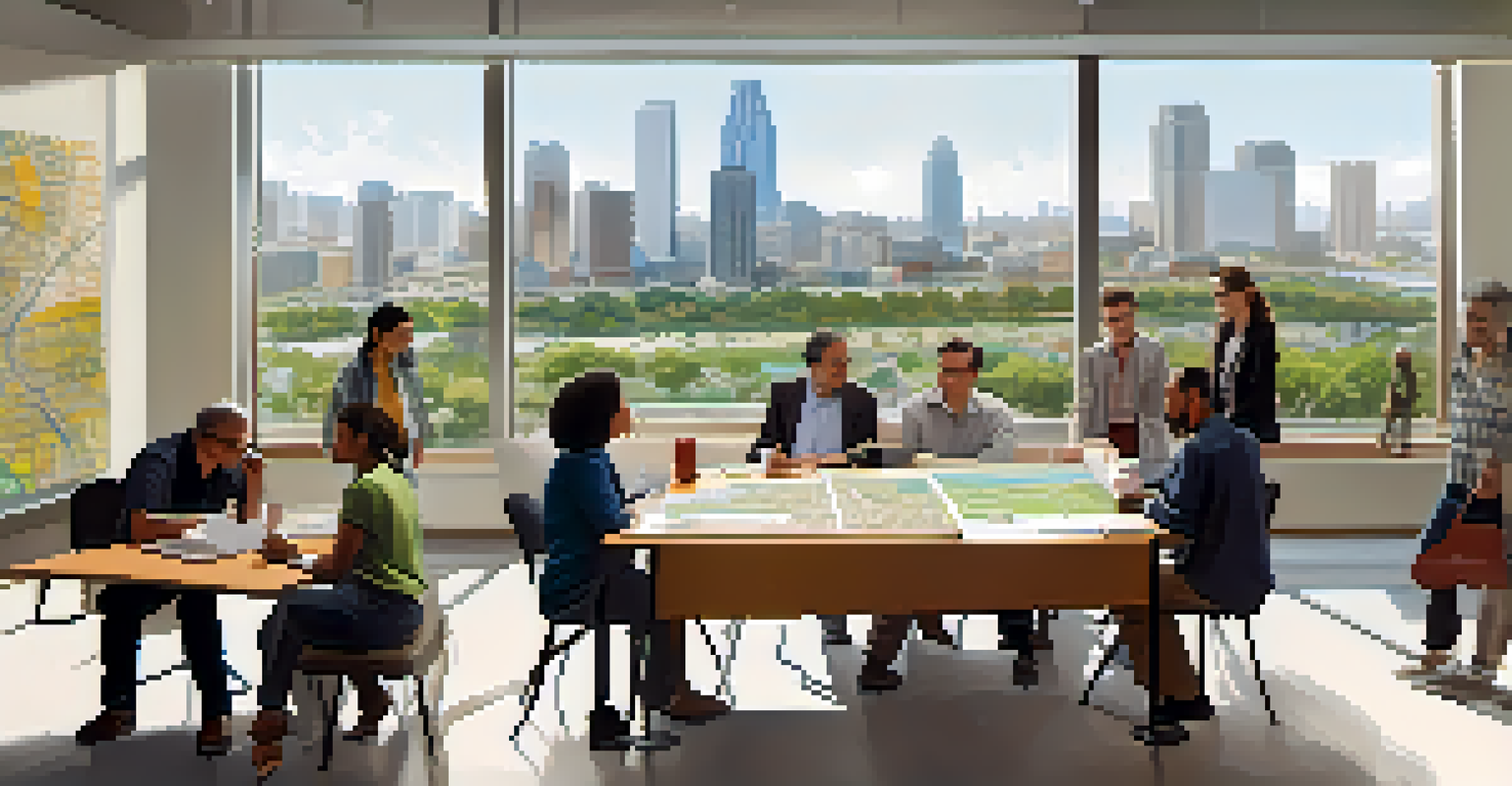Walking as a Sustainable Transportation Method in Austin

The Benefits of Walking for Sustainable Transportation
Walking is a simple yet powerful way to reduce our carbon footprint. By choosing to walk instead of driving, we can significantly lower greenhouse gas emissions and help combat climate change. Not only does walking benefit the environment, but it also promotes healthier lifestyles, making it a win-win for both individuals and the planet.
Walking is man's best medicine.
In cities like Austin, where traffic congestion can be an issue, walking helps alleviate some of that strain. Imagine strolling through the city instead of sitting in traffic, breathing in the fresh air while enjoying the vibrant street life. Walking allows you to engage more deeply with your surroundings, fostering a sense of community and connection to the local culture.
Moreover, Austin's mild climate and scenic landscapes make it an ideal city for walking. From the bustling streets of downtown to the serene paths along Lady Bird Lake, there are countless routes to explore. Walking not only reduces reliance on cars but also opens up opportunities to discover hidden gems throughout the city.
Austin's Walkability: A City Designed for Pedestrians
Austin is increasingly recognized for its walkability, with numerous initiatives aimed at making the city more pedestrian-friendly. Many neighborhoods are designed to encourage walking, with sidewalks, crosswalks, and safe pathways that connect residents to essential services. This urban planning approach not only promotes sustainable transportation but also enhances the overall quality of life for residents.

The city’s commitment to pedestrian infrastructure is evident in its investment in parks and public spaces. For instance, the hike-and-bike trails around Lady Bird Lake offer a beautiful, safe environment for walkers and joggers alike. These areas serve not only as transportation routes but also as recreational spaces that foster social interaction and community engagement.
Walking Reduces Carbon Footprint
Choosing to walk instead of driving significantly lowers greenhouse gas emissions, benefiting both individual health and the environment.
Additionally, events like the annual Walk to School Day highlight the importance of walking in everyday life. These initiatives encourage families to embrace walking as a practical and enjoyable mode of transport, thereby instilling sustainable habits in future generations. As more people walk, the city becomes a more vibrant and connected place to live.
Challenges to Walking in Austin: Addressing Concerns
Despite its many benefits, walking in Austin is not without challenges. Issues like uneven sidewalks, limited pedestrian crossings, and safety concerns can deter people from choosing to walk. Addressing these concerns is crucial for fostering a walking culture that prioritizes safety and accessibility for everyone, regardless of age or ability.
The journey of a thousand miles begins with one step.
Another challenge is the city's growing population, which can lead to increased traffic and crowded sidewalks. As more residents flock to Austin, it’s essential to ensure that walking remains a viable option for commuting and leisure. Urban planners and local authorities must work together to create solutions that accommodate both pedestrians and vehicles.
Community awareness also plays a significant role in promoting walking. By engaging residents in discussions about the importance of pedestrian-friendly environments, cities can cultivate a culture that values walking. Initiatives that raise awareness about the benefits of walking can empower residents to advocate for improvements in their neighborhoods.
Creating Safe Walking Routes: Urban Planning Strategies
Urban planning plays a pivotal role in enhancing walkability in Austin. By strategically designing neighborhoods with pedestrian access in mind, planners can create routes that are not only safe but also enjoyable. This includes incorporating wide sidewalks, adequate lighting, and strategically placed crosswalks to facilitate safe passage for walkers.
Additionally, mixed-use developments that combine residential, commercial, and recreational spaces can significantly enhance walkability. When people have access to shops, parks, and workplaces within walking distance, they're more likely to leave their cars at home. This type of planning encourages a vibrant street life, where pedestrians feel comfortable and engaged in their surroundings.
Austin's Walkability Enhances Life
The city's commitment to pedestrian-friendly infrastructure fosters community engagement and improves the quality of life for residents.
Moreover, incorporating green spaces and natural elements into urban design can make walking more appealing. Parks, trees, and landscaping not only beautify the area but also provide shade and comfort for walkers. A well-designed walking environment can transform a mundane stroll into a delightful experience, motivating more people to choose walking as their primary mode of transportation.
Community Initiatives: Promoting Walking in Austin
Austin is home to various community initiatives aimed at promoting walking as a sustainable transportation option. Programs like 'Walk Austin' encourage residents to explore their neighborhoods on foot while providing resources and information about local walking routes. These initiatives foster a sense of community and encourage individuals to make walking a part of their daily routine.
Local organizations often host walking events, such as guided tours or group walks, to raise awareness about the benefits of walking. These events not only provide an opportunity for residents to socialize but also highlight the city’s pedestrian-friendly infrastructure. By participating in these activities, individuals can discover new paths and appreciate the beauty of their surroundings.
Moreover, schools and local governments are increasingly promoting walking as a healthy and sustainable mode of transport. Programs that encourage students to walk to school can significantly reduce traffic congestion and instill healthy habits at an early age. By creating a culture of walking, Austin can cultivate a more sustainable future.
The Role of Technology in Enhancing Walkability
Technology is playing an increasingly important role in making walking more accessible and enjoyable in Austin. Mobile apps that provide real-time information about pedestrian routes, safety alerts, and local attractions can enhance the walking experience. These tools empower walkers by ensuring they have the information they need to navigate the city confidently.
Furthermore, innovations like pedestrian-friendly navigation systems and smart traffic lights can significantly improve safety for walkers. For instance, some intersections now feature signals that prioritize pedestrian crossing, reducing the risk of accidents. Such advancements not only facilitate smoother traffic flow but also instill a sense of safety among those who choose to walk.
Community Initiatives Promote Walking
Various programs and events in Austin encourage residents to embrace walking as a sustainable and healthy mode of transportation.
Additionally, social media platforms and community forums often serve as spaces for walkers to share their experiences and tips. By fostering online communities that celebrate walking, Austin can encourage more residents to embrace this sustainable transportation method. As technology continues to evolve, its integration into urban planning will further enhance walkability in the city.
Walking as a Lifestyle: Embracing a Sustainable Future
Ultimately, walking should be seen as more than just a mode of transportation; it’s a lifestyle choice that promotes sustainability and well-being. By incorporating walking into our daily routines, we can contribute to a healthier planet while reaping the benefits for our own health. This mindset shift can inspire individuals to reconsider how they navigate their surroundings.
As Austin continues to grow and evolve, embracing walking as a primary transportation method can lead to a more sustainable urban environment. The collective efforts of residents, city planners, and local organizations in promoting pedestrian-friendly initiatives can create a city where walking is not only feasible but also enjoyable. Together, we can pave the way for a greener future.

In conclusion, walking is a sustainable solution that enhances our connection to the city and to one another. By championing this simple yet impactful mode of transport, we can help Austin thrive while taking meaningful steps toward a healthier planet. So, let’s lace up our shoes, hit the streets, and embrace the joy of walking.